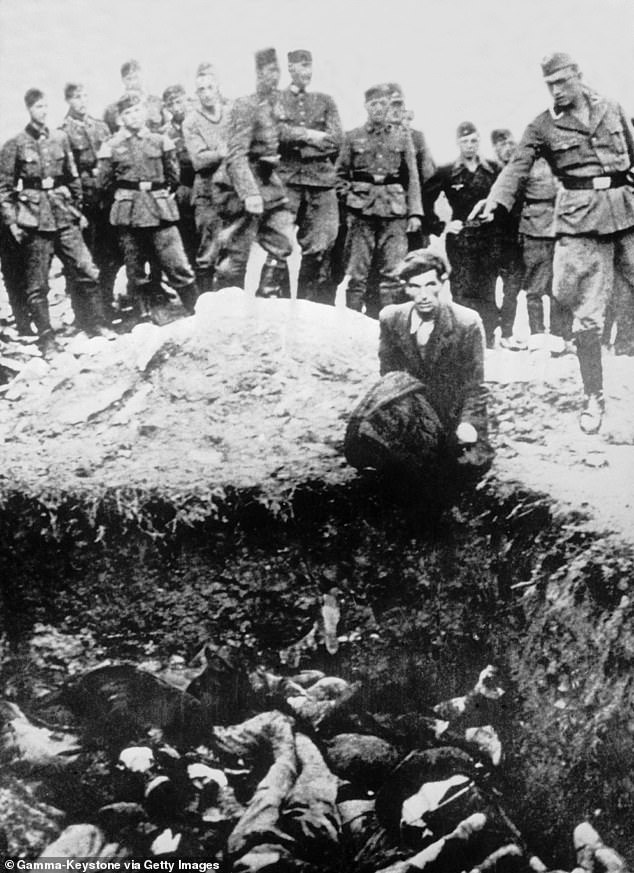A haunting photograph from World War II, long regarded as one of history’s most chilling images, has finally revealed the identity of the Nazi soldier shown holding a pistol to the head of a kneeling Jewish victim.
After more than 80 years, researchers have identified the executioner as SS officer Jakobus Onnen, who was just 33 years old at the time of the killing.
The Last Jew of Vinnytsia
The image, widely known as The Last Jew of Vinnytsia, depicts a German soldier in spectacles aiming a pistol at a man kneeling beside a mass grave, while other soldiers stand nearby.
Taken in 1941, the photograph has become a stark symbol of the systematic murder of Europe’s Jewish population.
The identity of the victim remains unknown, but the photo’s power to capture the horror of the Holocaust has endured for decades.
A Historian Pieces Together the Past
Jürgen Matthäus, a Holocaust historian with decades of experience, is credited with uncovering Onnen’s identity.
Matthäus said he is “99 percent certain” that Onnen was the executioner.
He previously located the exact timing and site of the mass execution, first revealed during the 1961 trial of Nazi war criminal Adolf Eichmann.
Originally, it was believed that the execution took place in Vinnytsia, about 125 miles southwest of Kyiv.
However, a diary kept by Austrian soldier Walter Materna later clarified that the massacre actually occurred in Berychiv, a city between Kyiv and Vinnytsia.
The Tip That Led to Onnen
The breakthrough came in 2023 when a retired German teacher noticed a resemblance between the man in the photo and his wife’s late uncle.
Though he did not reveal the name, he provided crucial biographical details, including his birth in 1912, SS enlistment, and death fighting partisans in 1943.
Using these details and cross-referencing historical archives, Matthäus was able to identify the executioner as Jakobus Onnen.
Before the war, Onnen had taught French, English, and gymnastics at the Deutsche Kolonialschule in Witzenhausen.
In 1939, he became fully active in the SS, serving first as a guard at Dachau before being deployed to the Eastern Front with Einsatzgruppe C in 1941.
Onnen’s Legacy and Final Resting Place
Onnen was killed in combat in 1943, and his name remains on a memorial plaque for fallen soldiers in Weener, near his birthplace of Tichelwarf in East Frisia, close to the Dutch border.
Matthäus explained that a combination of AI technology, archival records, and personal accounts made it possible to finally unmask the soldier behind the photograph.
Remembering the Atrocities
The photograph remains a chilling reminder of the atrocities committed by Nazi Germany.
Over the years, countless images have documented the inhumane treatment of victims: survivors stoking the flames of crematoria, malnourished prisoners awaiting execution, and other horrific scenes.
Many of these photographs were distributed by the United States Holocaust Memorial Museum under former President Dwight Eisenhower’s directive to educate the public about Hitler’s crimes.
AI and History Converge
This discovery highlights how modern technology, when combined with meticulous historical research, can illuminate the darkest chapters of history.
The unmasking of Jakobus Onnen ensures that even decades later, the world can better understand the individuals behind the machinery of genocide, while continuing to honor the memory of the victims.
Share on Facebook «||» Share on Twitter «||» Share on Reddit «||» Share on LinkedIn